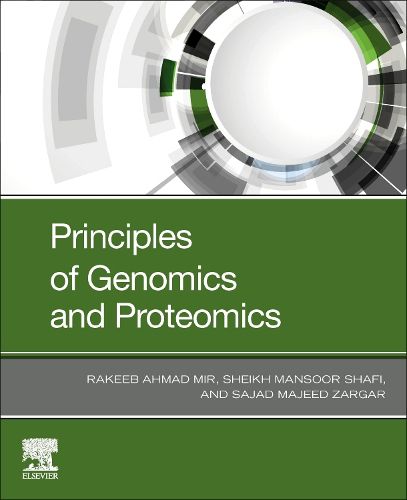Readings Newsletter
Become a Readings Member to make your shopping experience even easier.
Sign in or sign up for free!
You’re not far away from qualifying for FREE standard shipping within Australia
You’ve qualified for FREE standard shipping within Australia
The cart is loading…






Principles of Genomics and Proteomics: A Technical Guide is the perfect reference for graduate students and researchers in these areas to understand its principles and execute precise and reproducible experiments. Following an introductory chapter, the book dives into proper research, including genome mapping. Experiments covered in the book span from Sangers Sequencing, Shotgun sequencing, SAGE analysis, DNA footprinting, Gel retardation, ChIP, and protein resolution methods, including PAGE, 2D gel electrophoresis and isoelectric focusing. Biophysical techniques are also described in detail, including ultraviolet and visible light spectroscopy, fluorescence spectroscopy, NMR and X-ray diffraction.
A final proteome analysis is dedicated to functional analysis. Other chapters cover applications of omics technologies broadly. This book is the perfect reference for genetics labs around the world. Graduate students will benefit from the structured and detailed coverage of methods and established researchers will benefit from the book for staff training in research and may find it particularly helpful in enhancing reproducibility of experiments.
$9.00 standard shipping within Australia
FREE standard shipping within Australia for orders over $100.00
Express & International shipping calculated at checkout
Principles of Genomics and Proteomics: A Technical Guide is the perfect reference for graduate students and researchers in these areas to understand its principles and execute precise and reproducible experiments. Following an introductory chapter, the book dives into proper research, including genome mapping. Experiments covered in the book span from Sangers Sequencing, Shotgun sequencing, SAGE analysis, DNA footprinting, Gel retardation, ChIP, and protein resolution methods, including PAGE, 2D gel electrophoresis and isoelectric focusing. Biophysical techniques are also described in detail, including ultraviolet and visible light spectroscopy, fluorescence spectroscopy, NMR and X-ray diffraction.
A final proteome analysis is dedicated to functional analysis. Other chapters cover applications of omics technologies broadly. This book is the perfect reference for genetics labs around the world. Graduate students will benefit from the structured and detailed coverage of methods and established researchers will benefit from the book for staff training in research and may find it particularly helpful in enhancing reproducibility of experiments.